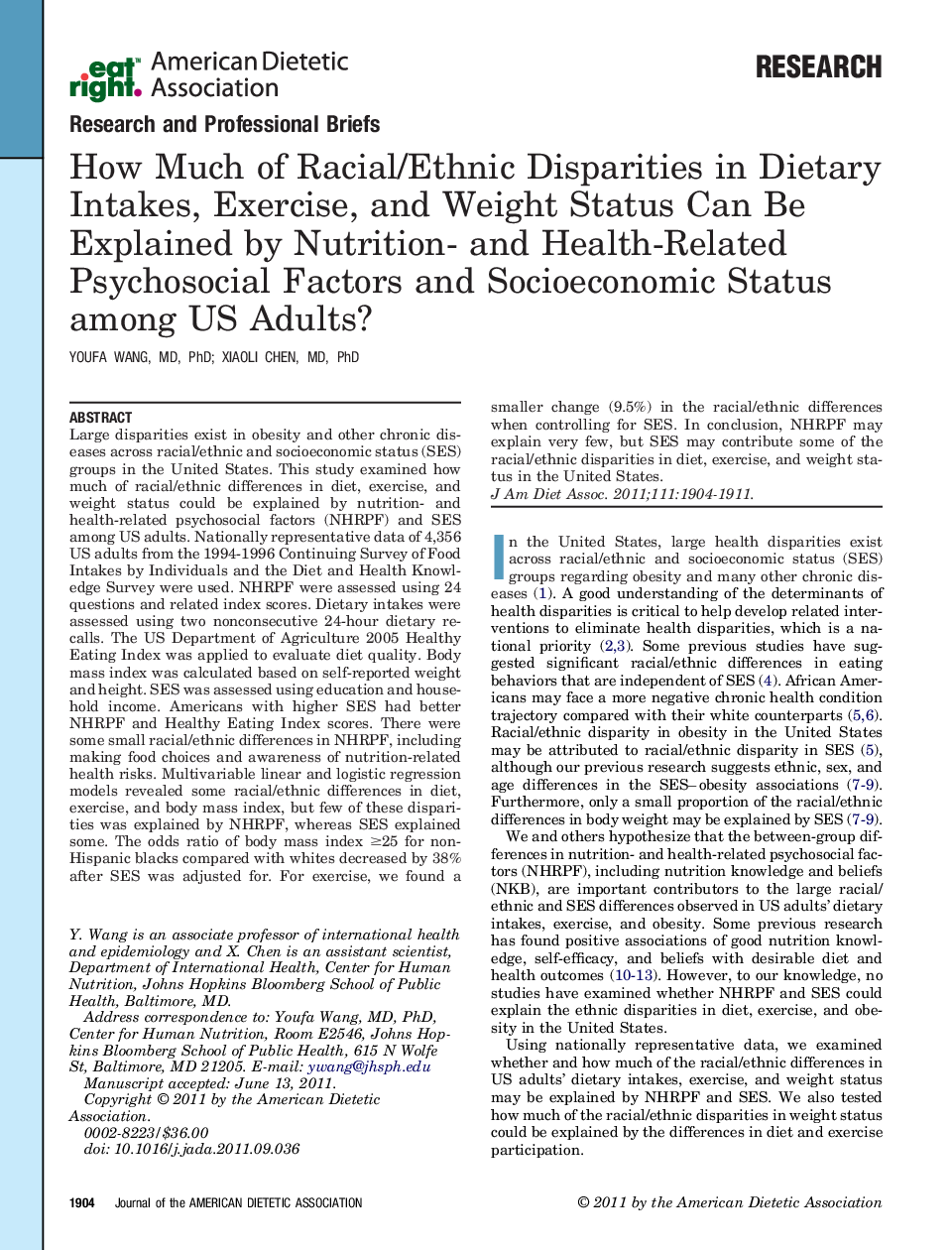| کد مقاله | کد نشریه | سال انتشار | مقاله انگلیسی | نسخه تمام متن |
|---|---|---|---|---|
| 2655134 | 1564101 | 2011 | 8 صفحه PDF | دانلود رایگان |

Large disparities exist in obesity and other chronic diseases across racial/ethnic and socioeconomic status (SES) groups in the United States. This study examined how much of racial/ethnic differences in diet, exercise, and weight status could be explained by nutrition- and health-related psychosocial factors (NHRPF) and SES among US adults. Nationally representative data of 4,356 US adults from the 1994-1996 Continuing Survey of Food Intakes by Individuals and the Diet and Health Knowledge Survey were used. NHRPF were assessed using 24 questions and related index scores. Dietary intakes were assessed using two nonconsecutive 24-hour dietary recalls. The US Department of Agriculture 2005 Healthy Eating Index was applied to evaluate diet quality. Body mass index was calculated based on self-reported weight and height. SES was assessed using education and household income. Americans with higher SES had better NHRPF and Healthy Eating Index scores. There were some small racial/ethnic differences in NHRPF, including making food choices and awareness of nutrition-related health risks. Multivariable linear and logistic regression models revealed some racial/ethnic differences in diet, exercise, and body mass index, but few of these disparities was explained by NHRPF, whereas SES explained some. The odds ratio of body mass index ≥25 for non-Hispanic blacks compared with whites decreased by 38% after SES was adjusted for. For exercise, we found a smaller change (9.5%) in the racial/ethnic differences when controlling for SES. In conclusion, NHRPF may explain very few, but SES may contribute some of the racial/ethnic disparities in diet, exercise, and weight status in the United States.
Journal: Journal of the American Dietetic Association - Volume 111, Issue 12, December 2011, Pages 1904–1911